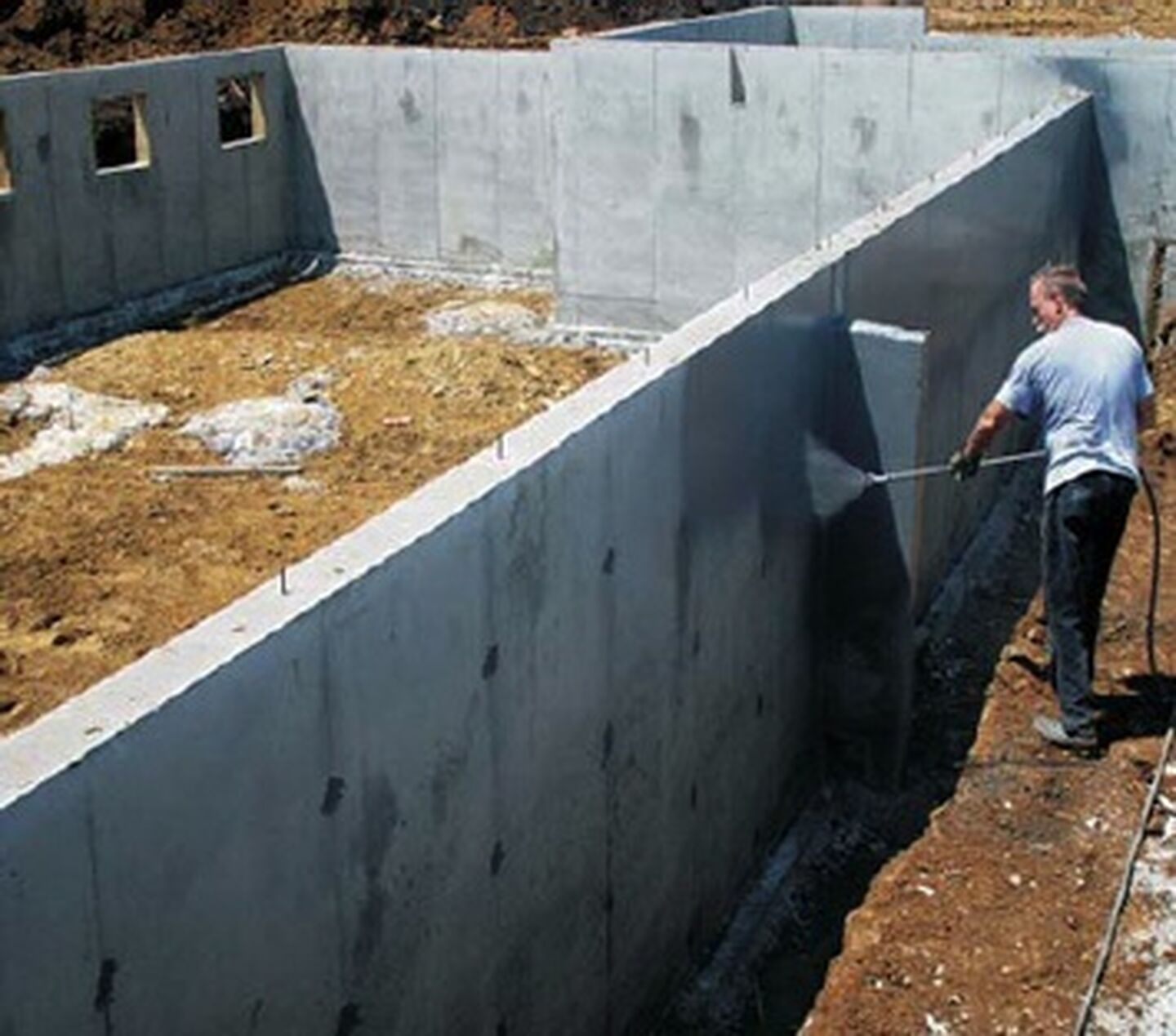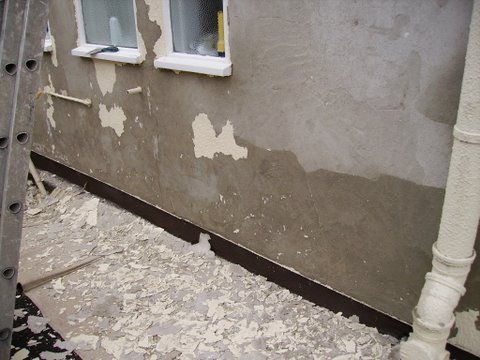Hidden signs you need damp proofing newcastle services now
Discovering the Various Methods and Solutions for Effective Damp Proofing
Moisture in structures positions substantial obstacles to both architectural integrity and interior air quality. Numerous methods and remedies have emerged to battle this prevalent problem. From standard damp-proof membranes to ingenious chemical treatments, each approach offers distinct benefits. Understanding these choices is essential for reliable moisture control. Choosing the best solution depends on certain building problems and needs, triggering additional expedition right into the most effective damp proofing strategies readily available.
Comprehending the Root Causes Of Wetness
Wetness can arise from different sources, comprehending these causes is important for effective removal. Commonly, moisture stems from 3 main resources: rising damp, permeating moist, and condensation. Increasing moist takes place when groundwater takes a trip up via porous materials, such as block or stone, typically as a result of a lack of an efficient barrier (damp specialist newcastle). Permeating damp is normally brought on by external elements, consisting of roofing leaks, defective rain gutters, or harmed walls, enabling water to infiltrate a residential property. Condensation, on the other hand, arises from excess dampness in the air, frequently exacerbated by bad ventilation and temperature level distinctions, leading to water droplets basing on surface areas. Identifying these underlying issues is essential, as each sort of dampness calls for a customized approach for removal. Proper assessment aids in identifying the most reliable solutions, inevitably safeguarding the architectural integrity of a structure and enhancing interior air high quality
Conventional Damp-Proof Membrane Layers

Chemical Damp-Proofing Solutions
Chemical damp-proofing options supply an innovative approach to stop dampness intrusion in buildings. These techniques commonly involve the application of fluid chemicals that pass through masonry and develop an obstacle versus rising wet. Commonly utilized chemicals consist of silanes, siloxanes, and various other water-repellent agents that react with surface area materials to create a hydrophobic layer.The application process generally requires exploration openings into the wall surfaces, injecting the chemical remedy, and permitting it to treat. This technique is specifically useful for older frameworks where standard damp-proof membranes might be unwise. Furthermore, chemical damp-proofing can be much less disruptive and more cost-effective than extensive restoration projects.While effective, these services depend upon proper application and environmental conditions for peak performance. Routine maintenance and surveillance are vital to assure the long life of the damp-proofing therapy. Generally, chemical damp-proofing stands for a functional choice for safeguarding structures against moisture-related damage
Dental Caries Wall Construction Methods
Cavity wall building and construction strategies offer countless benefits, specifically in moisture control and power performance. By integrating an air space between 2 layers of stonework, these wall surfaces efficiently alleviate water access while enhancing insulation. This mix not only safeguards frameworks from moisture yet also contributes to reduced power usage.
Benefits of Cavity Wall Surfaces
When taking into consideration efficient wet proofing techniques, the benefits of dental caries wall surfaces stick out plainly. Cavity walls contain 2 separate layers, producing an air gap that properly minimizes moisture infiltration. This layout minimizes the threat of moisture, as the external wall surface functions as a barrier against rain and water ingress. Additionally, dental caries walls boost thermal insulation, which adds to power effectiveness by minimizing heat loss. They likewise provide audio insulation, helping to create a quieter interior environment. The air space allows for air flow, which helps in moisture control and minimizes the likelihood of mold growth. These advantages not only boost the general comfort of a structure yet likewise contribute to its long life and architectural honesty.
Dampness Control Strategies
Reliable moisture control techniques are vital in tooth cavity wall surface construction to guarantee long-term protection against wetness. One main method involves the incorporation of weep holes, which promote water drain from the tooth cavity, avoiding buildup. Furthermore, using breathable membrane layers can aid take care of dampness degrees while enabling trapped vapor to escape. Appropriate placement of insulation is also essential, as it should not block water drainage courses. Moreover, making certain that the external fallen leaves of the cavity wall surface are constructed with water-resistant products boosts general toughness. Routine upkeep checks are necessary to determine any kind of blockages or damage early, safeguarding the framework's integrity. Inevitably, a combination of these techniques creates a durable protection against wetness breach in dental caries walls.
Insulation and Energy Efficiency
Insulation plays a crucial role in boosting energy efficiency within dental caries wall building. By this contact form including shielding products, these walls develop a thermal barrier that decreases warm loss and minimizes energy intake. Reliable insulation not only aids preserve a stable indoor temperature level but additionally reduces the danger of dampness, as it avoids condensation within the wall surface dental caries. Different strategies, such as using inflexible foam boards or mineral wool, can be used to attain perfect insulation efficiency. Additionally, correct installment is necessary to assure that spaces and gaps are lessened, which can or else compromise power efficiency. Ultimately, a well-insulated cavity wall adds greatly to total sustainability and decreases heating & cooling expenses for homeowners.
Exterior Damp Proofing Methods
Exterior damp proofing approaches are important for securing structures from dampness seepage. 2 reliable methods include the application of water-proof membrane layers and the installment of French drains. These options help reduce water build-up and maintain the integrity of buildings.
Waterproof Membrane Application
While different techniques exist for protecting against wetness access, the application of water-proof membranes remains a very efficient exterior moist proofing method. These membranes are typically made from products such as polyethylene, rubber, or customized bitumen, supplying a durable obstacle versus water penetration. The installment process involves using the membrane to the exterior surfaces of structures or walls, making sure full protection to prevent leakages. Appropriate bond and sealing at joints are essential to optimizing efficiency. Water resistant membrane layers can be used in numerous types, consisting of fluid layers and sheet membranes, enabling for flexibility based upon the details needs of the structure. This method not only shields structures from dampness however also boosts their long life and structural honesty.
French Drain Installation
One reliable technique for taking care of groundwater and preventing wetness buildup around a building's structure is the installment of a French drain. This drain system includes a trench filled with gravel and a perforated pipeline that reroutes surface area water far from the structure. Proper installment needs mindful preparation, making certain that the drainpipe slopes away from the structure to facilitate perfect water circulation. Furthermore, the area of the drainpipe is essential; it should be placed in locations susceptible to pooling or excess dampness. Regular maintenance, including clearing debris from the crushed rock and making certain the pipe stays unhampered, is essential for long-lasting efficiency. Eventually, a well-installed French drain can considerably decrease the risk of water-related concerns in foundations and basements.
Interior Waterproofing Methods
Inside waterproofing strategies are crucial for safeguarding a structure's interior from wetness infiltration and possible water damages. These techniques commonly involve the application of specific products and techniques made to develop a moisture obstacle within the structure. One usual next method is the usage of waterproof finishings or sealers on walls and floorings, which avoid wetness from permeating surfaces.Additionally, setting up indoor drain systems, such as sump pumps, can efficiently manage water accumulation in cellars and creep areas. An additional approach includes making use of vapor barriers, which are mounted to inhibit wetness activity from the ground into living spaces.Moreover, addressing any kind of fractures or spaces in wall surfaces or structures with ideal sealants assures an extensive defense versus water breach. By implementing these interior waterproofing strategies, property owners can greatly minimize the risk of mold and mildew growth, architectural damage, and various other moisture-related issues. Appropriate implementation of these techniques is important for long-term protection and building honesty.
Regular Upkeep and Inspection Practices
Normal upkeep browse around these guys and evaluation methods are crucial for assuring the lasting performance of damp proofing remedies in any structure. Routine checks enable homeowner to identify very early indications of wetness breach, such as peeling paint, mold and mildew growth, and stuffy smells. These indications can signify underlying concerns that call for instant attention.Inspections should be carried out at least each year, concentrating on vulnerable areas like cellars, creep rooms, and exterior walls. During these evaluations, homeowner ought to examine sealants, drainage systems, and ventilation to verify they operate correctly.Additionally, keeping downspouts and seamless gutters is essential, as blocked systems can bring about water buildup near the foundation. Implementing a routine maintenance schedule, along with timely fixings, can substantially expand the life-span of wet proofing actions and secure the structural honesty of the structure. Positive steps eventually contribute to the total health and wellness and safety of the living atmosphere.
Regularly Asked Concerns
The Length Of Time Does Damp Proofing Usually Last?
The period of wet proofing performance varies, usually lasting in between 20 to half a century. Aspects such as application quality, ecological conditions, and upkeep techniques significantly influence the durability of the moist proofing therapy.

Can I Damp Evidence My Home Myself?
The private contemplated the expediency of DIY damp proofing. With appropriate research study and the best materials, it is possible. However, they additionally recognized the significance of specialist support to ensure lasting effectiveness and protect against future issues.
What Are the Indicators of Inefficient Damp Proofing?
Indications of ineffective damp proofing consist of consistent musty smells, visible mold growth, peeling off paint, wet spots on wall surfaces, and wood decay - damp proofing newcastle. Homeowners should resolve these problems immediately to stop more damage and wellness worries
Does Damp Proofing Affect Indoor Air Top Quality?

How Much Does Expert Damp Proofing Price?
Specialist moist proofing prices vary considerably, generally ranging from $1,000 to $5,000 relying on the residential or commercial property's size, the level of the damp problem, and chosen approaches. Each circumstance calls for a tailored assessment for precise prices. Frequently, wetness stems from three key sources: climbing moist, permeating wet, and condensation. When thinking about effective wet proofing methods, the benefits of cavity wall surfaces stand out prominently. External damp proofing methods are important for safeguarding structures from moisture infiltration. While different methods exist for avoiding moisture access, the application of water-proof membranes remains an extremely efficient outside wet proofing method. Indicators of inefficient moist proofing consist of relentless stuffy odors, visible mold and mildew development, peeling paint, moist patches on wall surfaces, and timber degeneration.